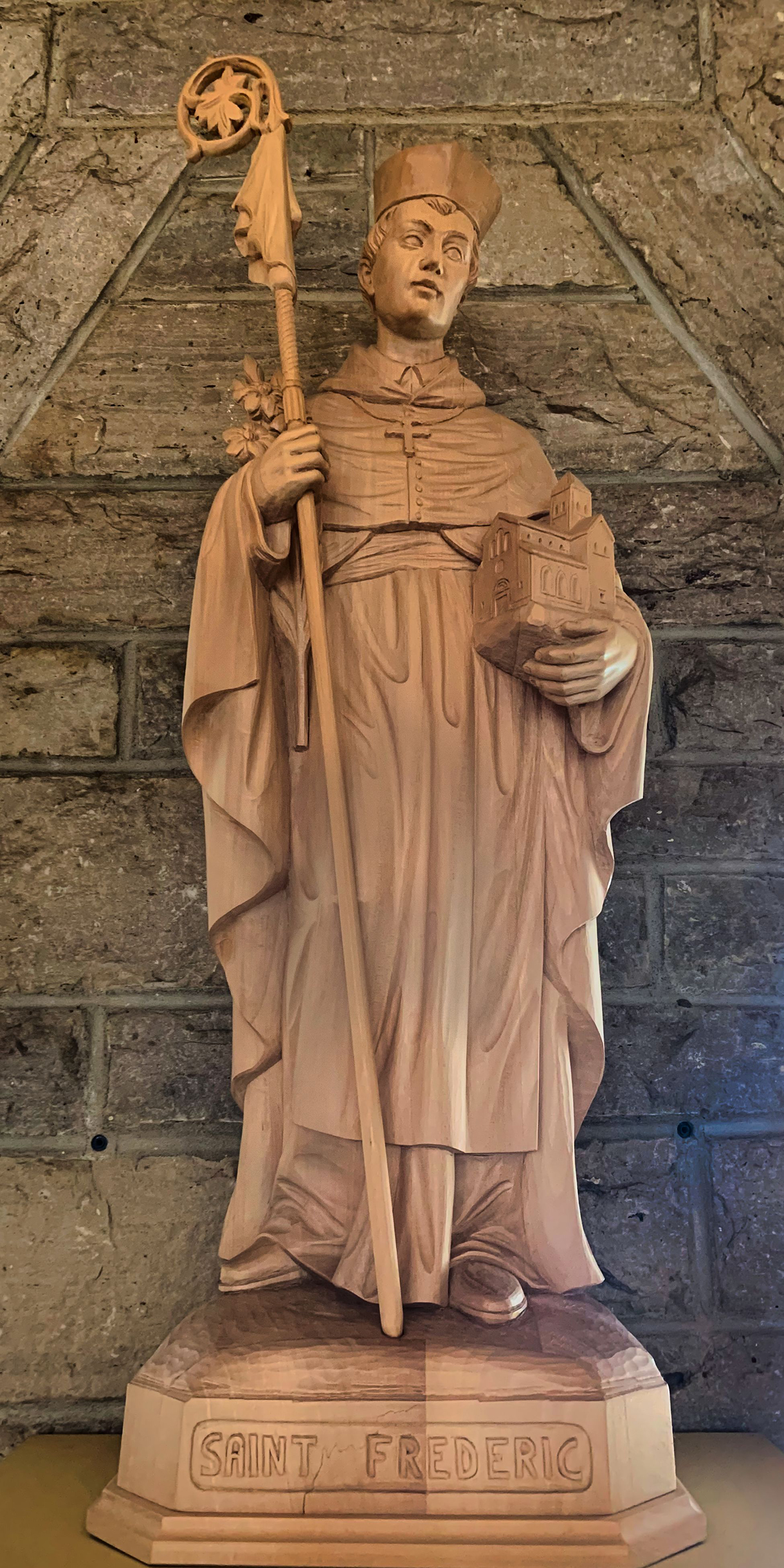Saints and Blesseds
Sacred Norbertine ancestors cross many ages and nationalities — from the early members of the original community at Prémontré in France to the martyrs of the order in the Holy Land, and from the challenges of the reformation to the crises of the modern era.
Throughout and beyond the centuries-old existence of their order, outstanding Norbertine men and women of heroic virtue remain sources of edification, inspiration and models for daily life.
Many disciples of Norbert attained sanctity and were drawn to his way of life, helping to further his ideals and values. Some followers left their high status as nobility and humbled themselves to found new houses of the order. Others used their talents as administrators, scholars, preachers and teachers, and still others simply served with generosity and humility.
St. Frederick


Frederick Feikone was the son of a poor widow from Hallum in Friesland. His priestly vocation was already noticed in his early years and his pastor gave him his first Latin instructions. He studied the liberal arts and the Holy Scriptures at Münster. Frederick had a special devotion to the Blessed Virgin Mary, St. John the Evangelist and St. Cecilia.
Returning from Münster, he became a teacher and was ordained a priest. He was appointed assistant priest to the pastor of Hallum, whom he later succeeded. Frederick wished to build a hospital and asked bishop Godfrey of Utrecht (1156-1177) for permission to establish a monastery of canons after the death of his mother. Thereafter he went to the Norbertine abbey of Mariënweerd to learn as novice about the monastic life. Afterward, he wandered through cities and villages to gather companions. In 1163, he built a monastery church dedicated to the Blessed Mother, Mariëngaarde. At first the priests and nuns lived in the same establishment, but soon the sisters moved to Bethlehem. He then went to Steinfeld in order to join the foundation to the Norbertine Order. Frederick simultaneously served asa abbot, pastor of Hallum and rector of Bethlehem. A seminary for educating priests was attached to the abbey and became famous in a short time.
Frederick became ill while at the Norbertine convent of Bethlehem and returned to Hallum. In the church in which he had celebrated his first Mass, he also celebrated his last. After the Mass, he returned to the abbey to die. He said to his confreres, “Pray for me, because I could not care for the poor as much as I wished since the monastery was so poor.” He urged his confreres to follow the Rule and assured them that he would never abandon them as long as they would remain faithful. He died on March 3, 1175.
So many miracles occurred at his grave that the church of Mariëngaarde became a much-visited pilgrimage site. In 1614, during the rule of the Calvinists in Friesland, Abbot Nicolas Chamart took Frederick’s relics to Bonne-Espérance, where they were entombed in the abbey church in 1616. During the French Revolution, they were taken to Vellereille, and in 1938, during Abbot Bouvens’ term, to Leffe in Dinant. Pope Benedict XIII approved Frederick’s cult on January 22/March 8, 1728. His feast was transferred from the day of his death since this date often fell in the season of Lent.

